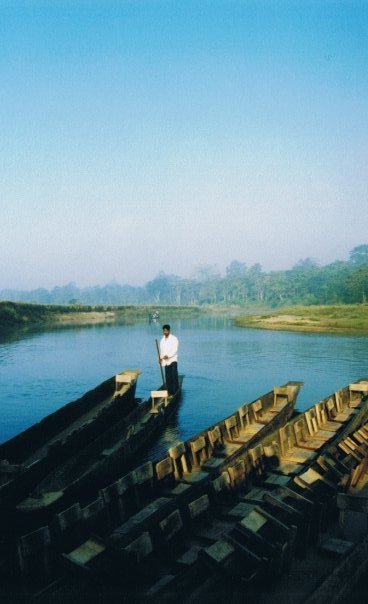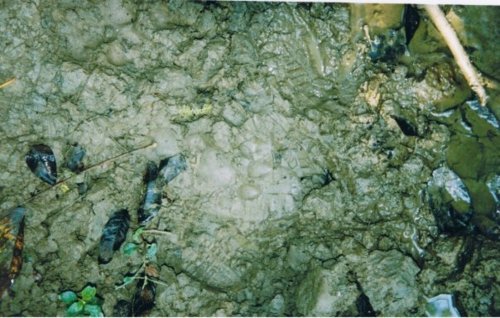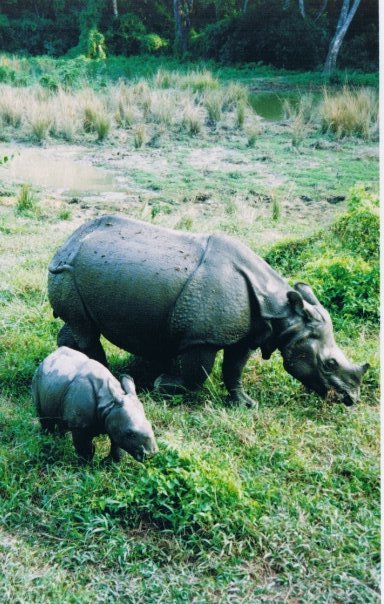One of my ambitions as a child had been to go to a tiger park in India. While some kids are obsessed with toys or cars, I was obsessed with animals (but not in a bestiality way). I would spend hours at my grandparents place, going through their encyclopedias, sorting the animals out into families and orders. I spent my pocket money, not on lollies or toys (although I did have a good GI Joe collection) but on nature books. And my favourite animal as a kid was the tiger. Now, I was going to India for six weeks and I had to try and schedule tiger viewing at a national park in. The only thing was that I was travelling with 4 other people, none of them as interested in tigers as me. And tiger reserves in India tend to be quite a way off the beaten track. So I decided in the end, that I wouldn’t try and go to a tiger park in India. I would go in Nepal instead.
Chitwan was Nepal’s first national park and was declared a UNESCO World heritage site in 1984. It is home to about 100 tigers but is most famous for its population of Indian rhinos, of which there are around 300 of in the park. The lodge we were staying at for three nights provided us with a guide, Laxman (or as we nicknamed him, Very Very Special, after the Indian cricket player VVS Laxman). In the lodge book, guests had recorded seeing tigers and rhinos, which Laxman confirmed. Laxman proved to be very knowledgeable, which was good because our safety and chances of seeing the wildlife depended on him. The first morning, we took a thirty-minute dugout canoe down the Rapti River, on the look out for crocs, birds and mammals. The canoe was so low to the water that you felt that any movement, extravagant or even subtle, might start water pouring into the vessel. Once that happened, it didn’t take much imagination to see the dugout capsized and us in the drink. That didn’t eventuate and apart from some beautiful kingfishers and a couple of peacocks, not much was seen on our meandering canoe journey.

Above:Dugouts like the ones we used to go croc spotting.
After a relaxing if not a little tense 30 minutes, we pulled into the bank, where we disembarked, ready to start a jungle walk. Laxman explained to us the procedure if we saw a rhino “stand still”, a bear “don’t worry” and a tiger “if it has a shiny coat, don’t worry, if it has a dull coat, run”. The rationale was that a tiger with a shiny coat is well fed whereas a cat with a dull coat may be sick, wounded or old and thus more likely to see humans as prey. Whilst good advice, it seemed a little scary, especially considering that Laxman only carried a rotten looking stick with him. There was no rifle, no firearm for protection. Within 5 metres of the bank, Laxman stumbled upon a tiger print. It seemed so soon into our walk, with his instructions still above his head like a speech bubble, that my first thought was that he was joking. But he wasn’t. Right there, in the mud, was a pretty fresh looking tiger print. My second thought was that he planted it, maybe through the means of some ingenious tiger print stamp. In hindsight, I doubt this but at the time, it seemed surreal that less than a minute into our walk and just after his safety speech, he had found evidence of the animal we most wanted to see. I won’t lie here and say I wasn’t more than a little nervous that we might encounter a tiger. Its one thing to see a tiger in the zoo and admire its grace and power but another thing to think that any moment you might come around a tree and come face to face with one. I was actually scared now, although I didn’t admit it to anyone at the time. I was conflicted, half of me wanted to see a tiger (but only a shiny coat tiger) and the other half was happy enough with the spoor and didn’t want to see the actual beast in the flesh The tension did add to the hike though. I’ve never felt so alert on a hike before. I was tensed, ready for action. It heightened your senses, so even now I have quite clear recollections of the sights, sounds and even smells of the Nepalese jungle. We walked for about an hour. There were no sightings of the tiger that had left the track for us so conveniently. After, we were out of the bush, I was disappointed we hadn’t run across it. In the bush, I was relieved we hadn’t.

Above: Tiger print in the mud.
Later in the day, we took an elephant safari. This was a much safer option than traipsing around the forest (at least I thought so until watching a clip on YouTube of a tiger attacking people on an elephant). People ask why you would pay to view animals in a national park where you can play less and get guaranteed sightings in a zoo. Well, I would say that the reasons are two-fold. First, while zoos serve an important function in conservation and education, nothing really beats seeing animals a natural environment. And secondly, it’s the chance encounters, the anticipation that around the corner might be a great sight that makes a safari much better than going to the zoo. There is the anticipation and then the satisfaction when you finally see an animal, in particular one of the bigger beasts. And so it was when we got our first rhino sighting. Our elephant stepped out of the forest and into a clearing. In the clearing, we saw a rhino with her baby.

Above: Indian Rhino with baby.
The beauty of an elephant safari is that you can get quite close to the rhino, the pachyderm presence seemingly calming to the other animals. We spent a bit of time observing these rare animals, watching them graze before they slowly retreated back into the forest when they bored of our company. Nothing really beats seeing such animals in their natural environment. Of course, we kept on hoping to see a tiger but I was content with the rhino viewings. Rhinos in Asia suffer the same fate as African rhinos. With their horns highly prized in Eastern medicine and a civil war in Nepal, the numbers had dropped but about 300 are found in and around Chitwan, which is about a tenth of all wild Indian rhinos in the world. It was amazing to see them; hopefully our generation won’t be the last that gets to enjoy their splendor.

No comments:
Post a Comment